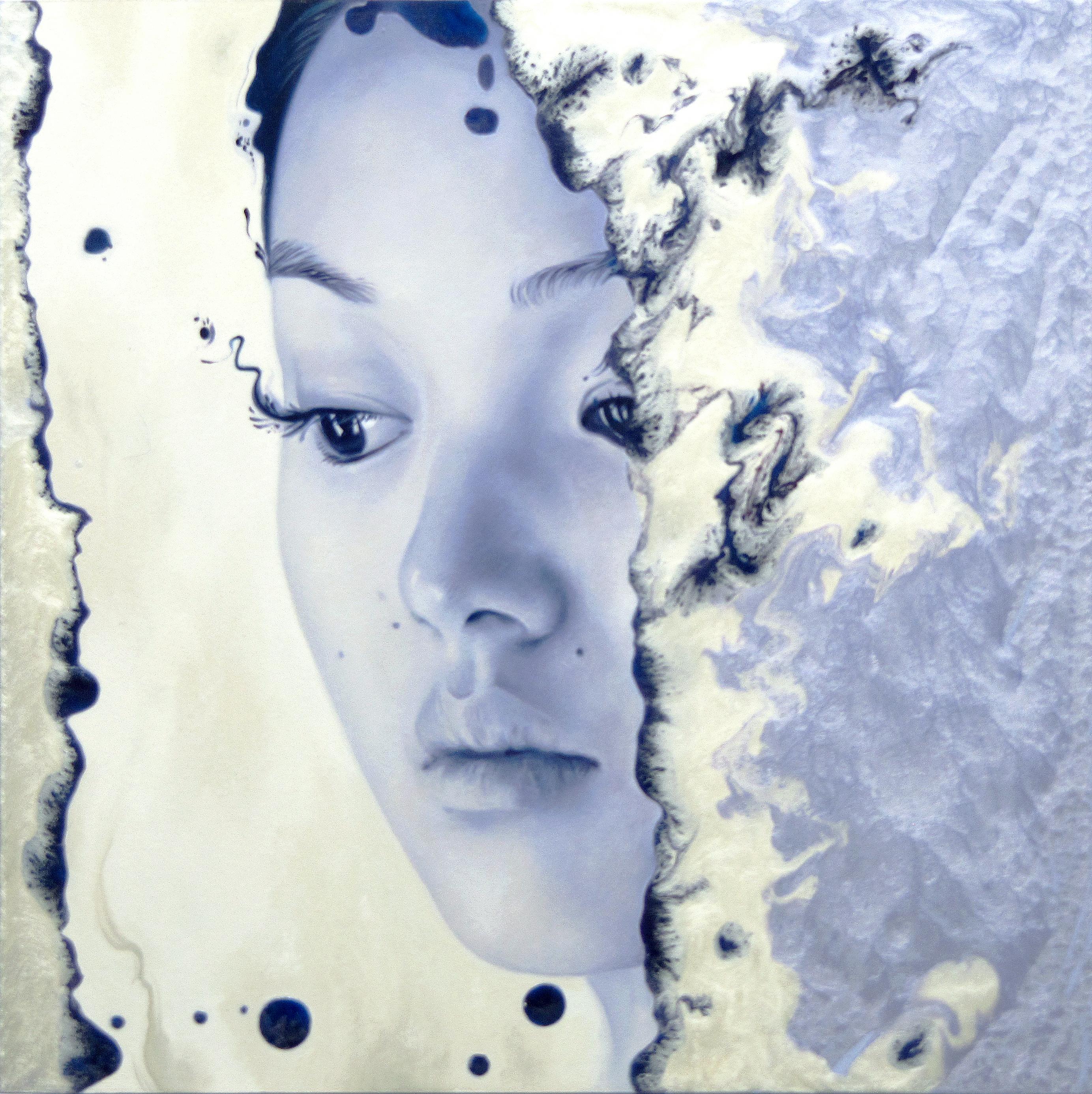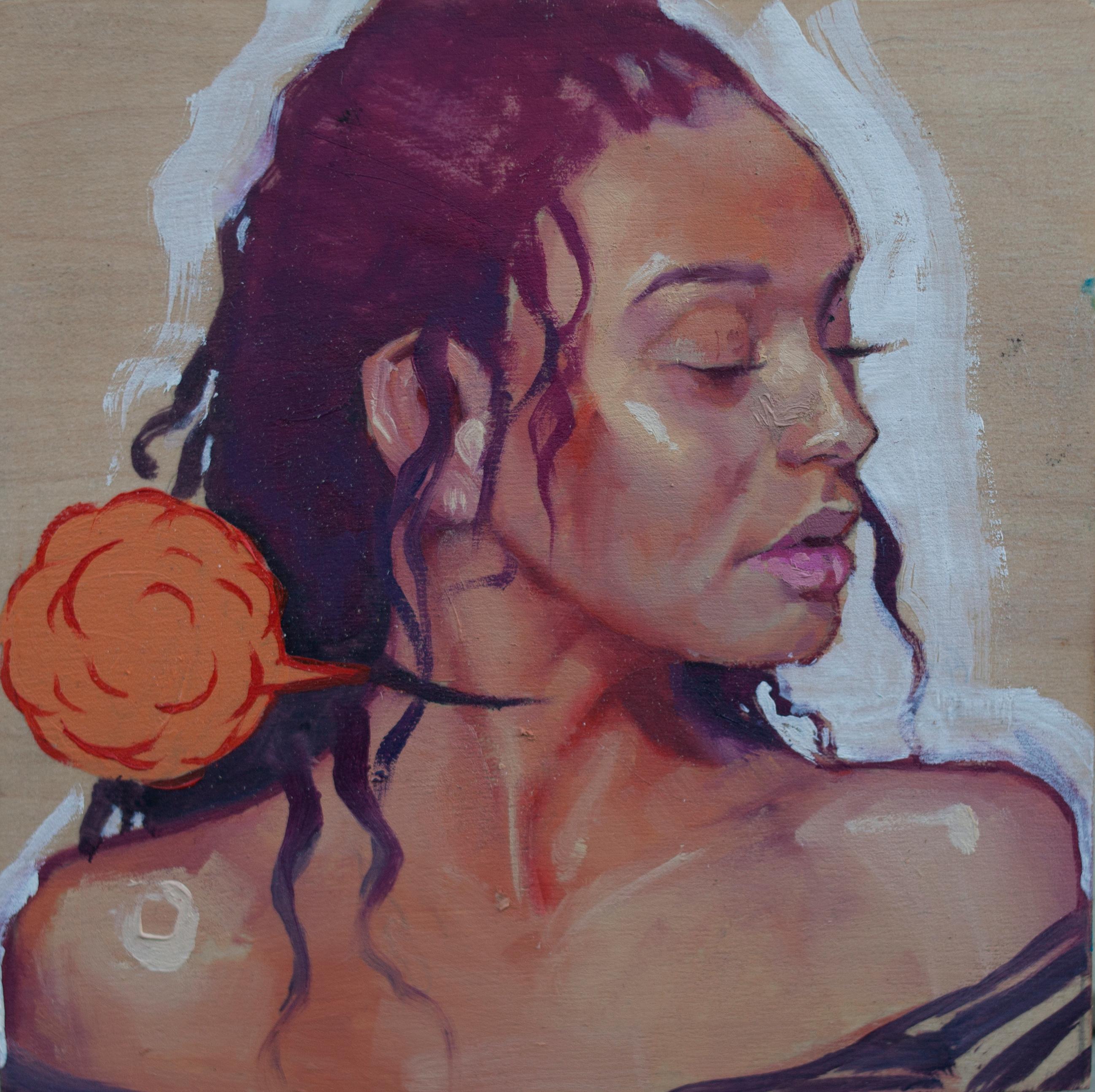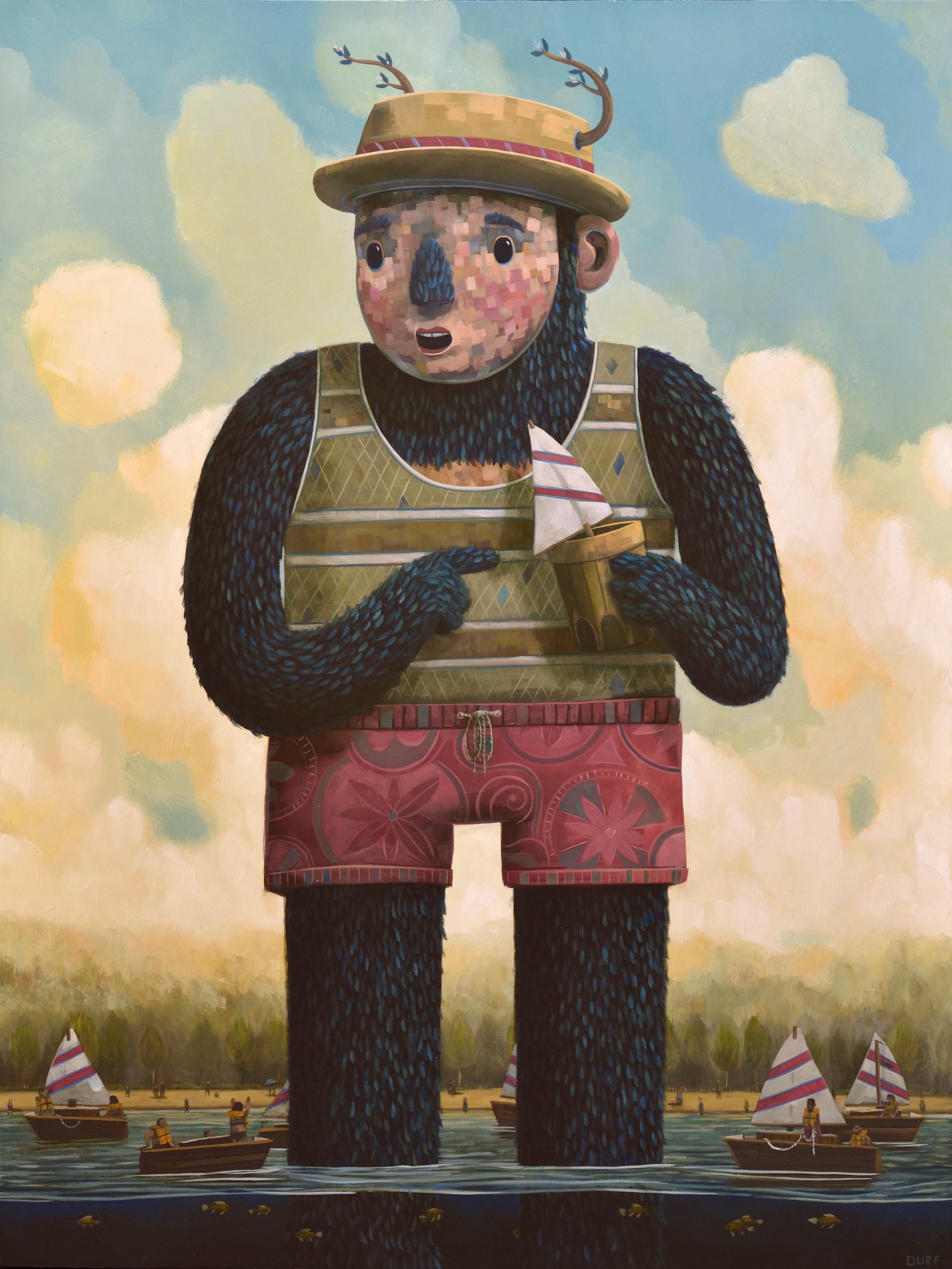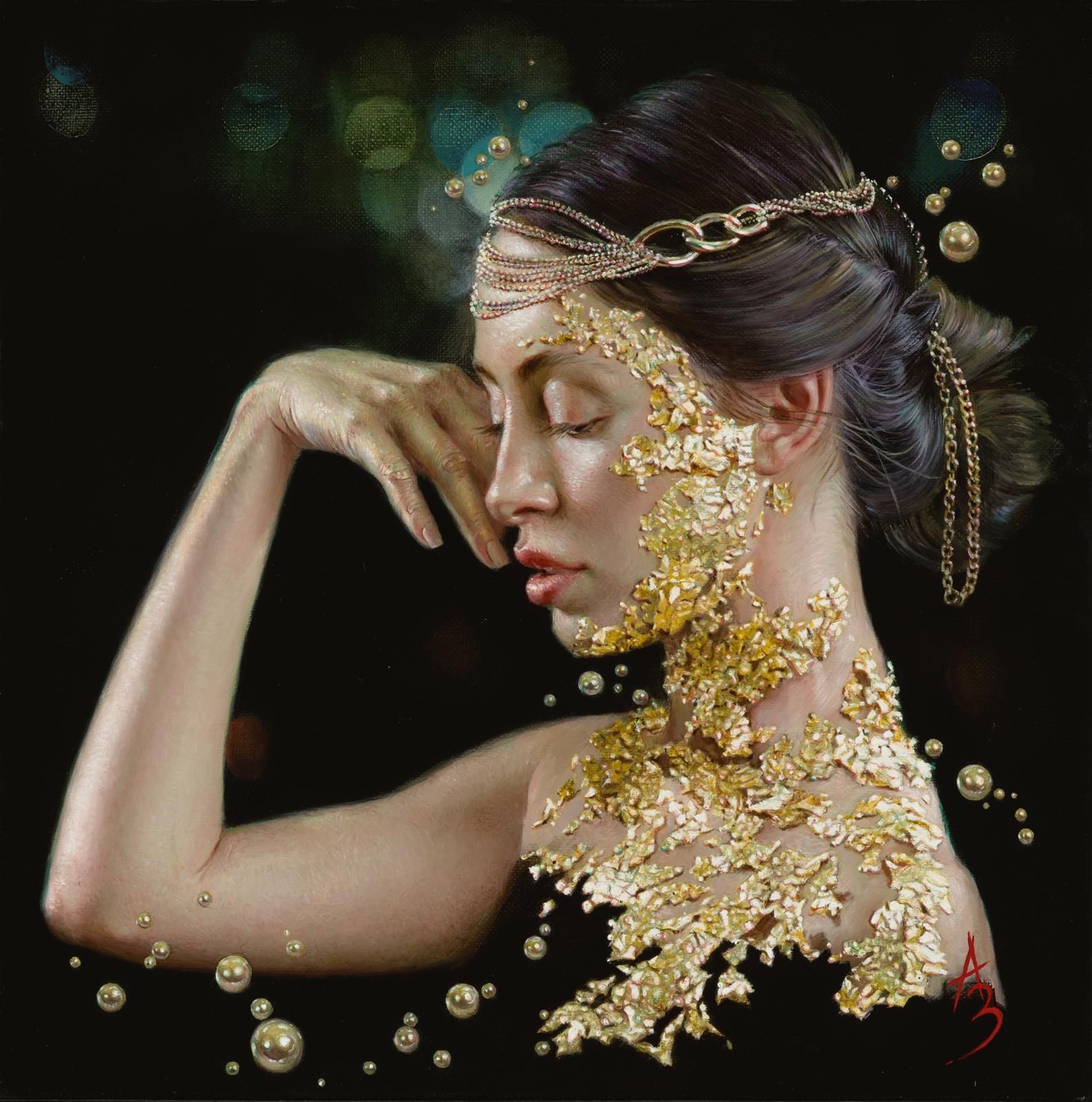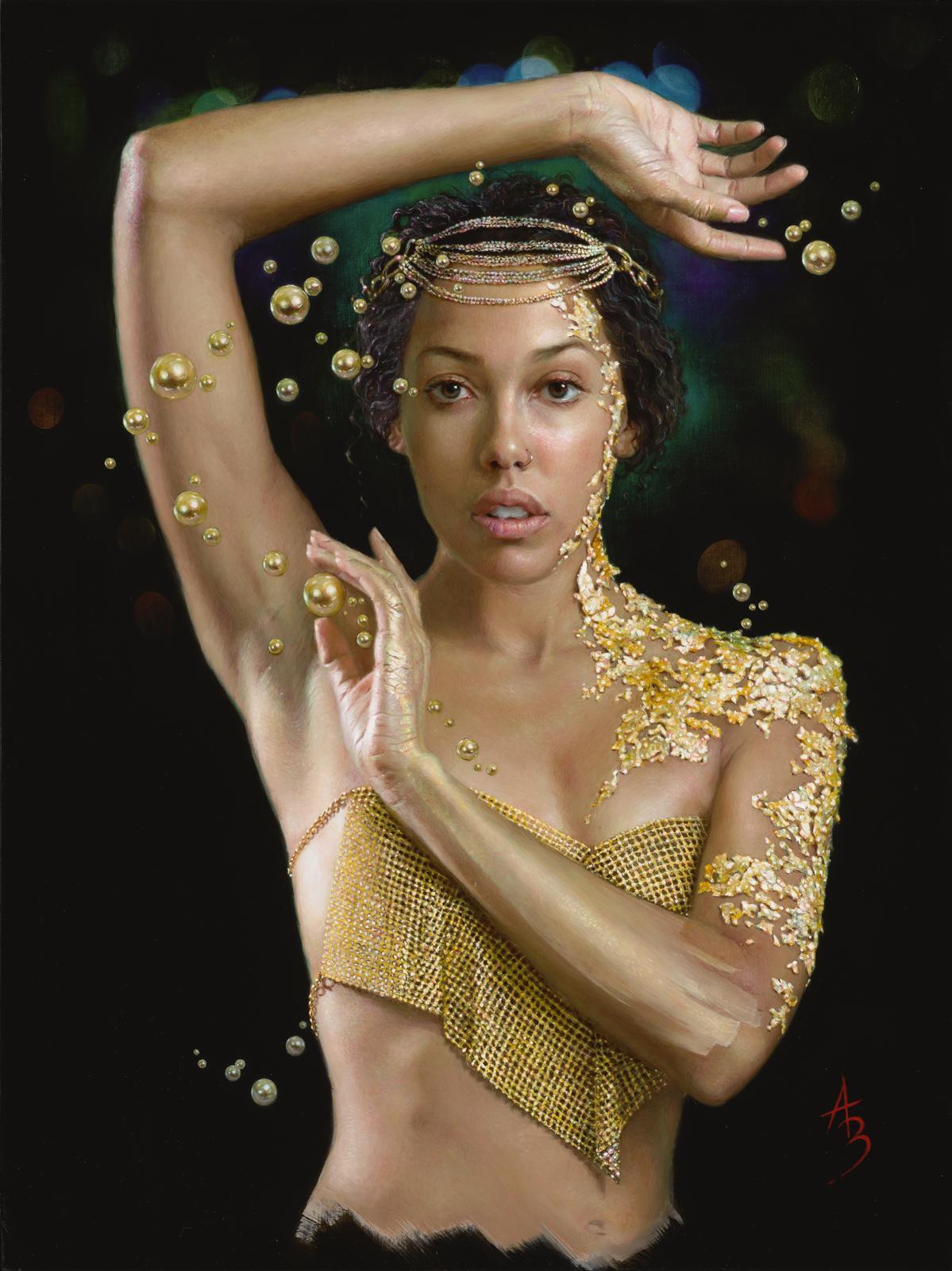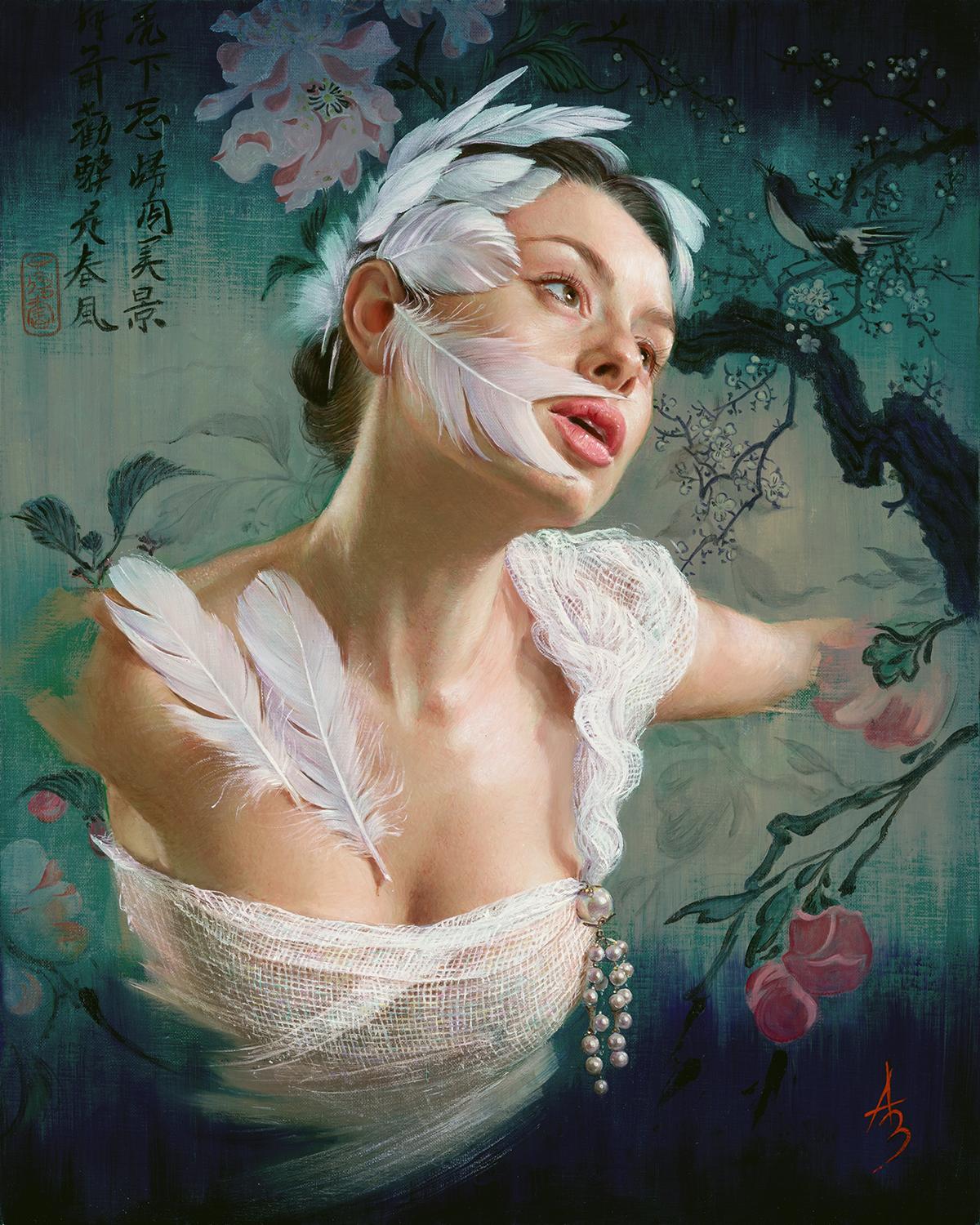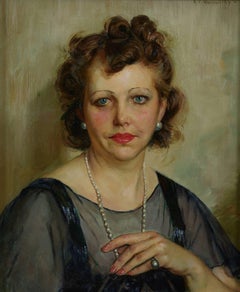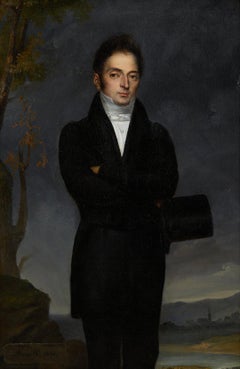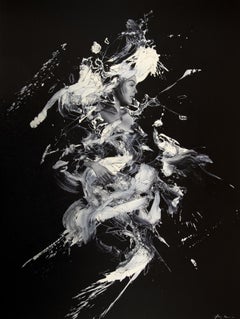
African Portrait, Mid-20th Century Surrealist Portrait of African Tribesmen
View Similar Items
Want more images or videos?
Request additional images or videos from the seller
1 of 11
Hugh M. PoeAfrican Portrait, Mid-20th Century Surrealist Portrait of African Tribesmen c. 1950
c. 1950
About the Item
- Creator:Hugh M. Poe (1902 - 1973, American)
- Creation Year:c. 1950
- Dimensions:Height: 33 in (83.82 cm)Width: 43 in (109.22 cm)
- Medium:
- Movement & Style:
- Period:
- Condition:
- Gallery Location:Beachwood, OH
- Reference Number:1stDibs: LU1768211939532
About the Seller
No Reviews Yet
Vetted Seller
These experienced sellers undergo a comprehensive evaluation by our team of in-house experts.
Established in 1975
1stDibs seller since 2022
9 sales on 1stDibs
Typical response time: 1 to 2 days
More From This SellerView All
- The Antique Dealer, 20th Century Oil Portrait of a Woman, Cleveland SchoolBy Abel WarshawskyLocated in Beachwood, OHAbel Warshawsky (American, 1883-1962) The Antique Dealer Oil on canvas Signed upper right, title on a label affixed verso 22 x 18 inches 27 x 23.5 i...Category
Mid-20th Century Impressionist Portrait Paintings
MaterialsOil
- 19th Century Portrait of a Gentleman with Top Hat, French ArtistLocated in Beachwood, OHLouis Joseph Fanelli Semah (French, 1804-1875) Portrait of a Gentleman with Top Hat, 1830 Oil on canvas Signed and dated lower left 16.25 x 10.75 inches 18.5 x 13 inches, framed Lou...Category
1830s Figurative Paintings
MaterialsOil
- Femme au Chapeau, 20th Century Portrait, Figurative Painting of a Woman w/ HatLocated in Beachwood, OHJesus C. Vilallonga (Canadian, 1927-2018) Femme au Chapeau Oil on canvas Signed lower left 24 x 16 inches 30 x 21.75 inches, framed Jesús Carles de Vilallonga was a Spanish/Canadian...Category
20th Century Contemporary Figurative Paintings
MaterialsOil
- 19th Century German School, Gentleman with Top Hat, 1839Located in Beachwood, OH19th Century German School Br: Venus aus Chemnitz 50 Jahre alt 58 24/5 39, 1839 Oil on canvas Signed lower left 25.5 x 20 inches 30.5 x 24.75 inches, framed The gentleman is Johann ...Category
1830s Figurative Paintings
MaterialsOil
- The Wood Chopper, Brecksville, Ohio, Early 20th Century Cleveland SchoolBy Frank WilcoxLocated in Beachwood, OHFrank Nelson Wilcox (American, 1887-1964) The Wood Chopper, Brecksville, Ohio, c. 1917 Oil on masonite 33 x 24 inches "We were fortunate in that the two farms in Brecksville were still open to our visits. The urbanization of the township was then only beginning and we spent several summers there where I tried to capture something of the rural peace so soon to be erased from the countryside." - Wilcox Exhibited: “Water Colors and Oils by Frank N. Wilcox,” Cleveland Museum of Art, January 1937. Frank Nelson Wilcox (October 3, 1887 – April 17, 1964) was a modernist American artist and a master of watercolor. Wilcox is described as the "Dean of Cleveland School...Category
1910s American Modern Figurative Paintings
MaterialsOil
- On the Back Porch, Brecksville, Ohio, Early 20th Century Cleveland SchoolBy Frank WilcoxLocated in Beachwood, OHFrank Nelson Wilcox (American, 1887-1964) On the Back Porch, Brecksville, Ohio, c. 1922 Watercolor on paper Monogram lower right 21.5 x 27. 5 inc...Category
1920s American Modern Figurative Paintings
MaterialsWatercolor
You May Also Like
- Surreal harlequin oil on board painting expressionism UbedaLocated in Barcelona, BarcelonaGustavo Úbeda (1930-1994) - Surrealist Harlequin - Oil panel Oil measurements 41x50 cm. Frame measurements 44x53 cm. The painting by Gustavo Úbeda Romer...Category
1970s Surrealist Figurative Paintings
MaterialsOil, Board
$1,263 Sale Price28% Off - surreal woman face oil on canvas paintingBy Miquel Torner de SemirLocated in Barcelona, BarcelonaMiquel Torner de Semir (1938) - Surrealist figure - Oil on canvas Oil measures 46x38 cm. Frameless. Miquel Torner de Semir (1938) Catalan painter attracted by the Middle Ages and I...Category
1990s Surrealist Figurative Paintings
MaterialsCanvas, Oil
$944 Sale Price28% Off - "Onyx" Mixed Media PaintingBy Aiden KringenLocated in Denver, COAiden Kringen's (US based) "Onyx" is an original handmade oil painting that is unframed, but ready to hang. About the Artist: A kaleidoscopic fantasia—crystalline planes floating in space, nestling together like immaculate puzzle pieces—abstract nebulae, human figures and faces enveloped in swirling fields or particles of energy—these number among the images evoked by the hauntingly enigmatic paintings of artist Aiden Kringen. Within this worldview a mysterious network of interlocking planes becomes visible to the beholder: mystical fields of unknown substance revealed as the building blocks of our bodies and semblances, surrounding, cocooning, perhaps even protecting us. It is a vision verging on the mystical, which Kringen portrays through a distinctive style: a fractured, cubistic mode of conscious- ness in which multiple dimensions or perspectives assimilate into an ecstatic whole. The artist deploys this style in opulent and seductive portraits as well as abstract tableaux whose optical signature is magnified by compositional dynamism and deeply layered surfaces. Born in Los Angeles in 1992, Kringen lived variously in the American West and Mexico—Sebastopol, Jalisco, Portland, Flagstaff—before settling in the hill- and vineyard-dotted environs of Sonoma, County, where he is now based. In these very different environments, each of which possesses a uniquely picturesque natural beauty, the artist began from an early age to develop his aesthetic approach. He has always had a keen eye for detail, grounded in a gift for looking closely at the human experience. “I’ve always been interested in observing people,” he recalls, “and in the details of how we interact with one another.” He put this natural ability to task when he began working on illustration and graphic-design projects while in high school. From his mother, an artist and graphic designer, he learned the fundamentals of composition and typography, the nuances of positive and negative space and the relationships between them. Using sheets of Letracet—a system for transfer- ring typeface—proved particularly instrumental in developing a methodology for layering and collage, which continue to inform his works on canvas and paper. He learned old-school tech- niques, hands-on and mechanical, in keeping with a Bauhaus-like appreciation for perfectionism, integrity, and hard work. Kringen began painting at 14. Then as now, drawing was central to his approach. He studied vintage anatomy atlases and drew meticulously in his journals, working through myriad permutations of bones and skin, angle and pose, muscles in motion. Honing his natural talent for figuration through long and exhaustive study, he arrived at an understanding of the figure that is both intuitive and virtuosic. On acrylic and mixed media on canvas, Kringen lays down linework with a Micron pen in ever-more-complex compositions, often with the addition of gloss mediums to bring out the layers’ reflectivity and prismatic character. In some pieces he incorporates gold and silver leaf to heighten drama and luxuriance, recalling the mosaic-like work of Gustav Klimt—who, along with fellow Austri- an Expressionist Egon Schiele, stands among Kringen’s most prominent influences. It was in 2011 that he began painting in the style with which he is now most associated: a technique fusing drawing and painting, line and brushstroke, with fragmented shapes undergirding the imag- ery. Notably, this is not simply a stylistic conceit, but more a way of perceiving reality. “Ever since I was young,” Kringen notes, “I’ve spent most of my time observing people: trying to break people down, in a visual sense, into small categorizations of their features, their mannerisms, the way they twitch their nose...” His hypersensitivity to likeness and gesture is key, for this is what distinguishes his portraits from those by artists who strive to depict idealized beauty as an end in itself. Yes, there is an undeniable beauty to Kringen’s subjects, but it does not follow strictly conventional paradigms. There is an individuality, a capturing of idiosyncracies and eccentricities, of optimism and fatalism, light and dark, in his work. He is not painting archetypes, but rather illuminating the essential charac- ters of real people in a highly refined genre of psychological portraiture. The fragmented linework, the grids of planes he uses as lenses to focus these characteristics, is sui generis but never gimmicky; above all it is a tool for defining and refining the features of the face, adding depth and definition. In his abstract work he uses similar techniques, paring the fabric of perception itself down to bare essentials of form, color, and texture. The abstract pieces are simultaneously elegant and complex, combining the sweeping gesturalism of Abstract Expressionism with the rigorous structure of geomet- ric painting. Across the breadth of his output Kringen balances technical and thematic polarities into bracing integrations of sensuality and grittiness, inviting contemplation into the nature of opticality and the infinite possibilities of the seen and unseen. —Richard Speer is a contributor to ARTnews, Artpulse, Visual Art Source, and Surface Design. His essays and reviews have appeared in The Los Angeles Times, The Chicago Tribune, The New York Post, The Oregonian, Salon, Newsweek, and Opera News. He is the author of “Matt Lamb...Category
2010s Surrealist Portrait Paintings
MaterialsOil, Canvas, Acrylic
- "Opulence 12" Mixed Media PaintingBy Aiden KringenLocated in Denver, COAiden Kringen's (US based) "Opulence 12" is an original handmade oil painting that is unframed, but ready to hang. About the Artist: A kaleidoscopic fantasia—crystalline planes floating in space, nestling together like immaculate puzzle pieces—abstract nebulae, human figures and faces enveloped in swirling fields or particles of energy—these number among the images evoked by the hauntingly enigmatic paintings of artist Aiden Kringen. Within this worldview a mysterious network of interlocking planes becomes visible to the beholder: mystical fields of unknown substance revealed as the building blocks of our bodies and semblances, surrounding, cocooning, perhaps even protecting us. It is a vision verging on the mystical, which Kringen portrays through a distinctive style: a fractured, cubistic mode of conscious- ness in which multiple dimensions or perspectives assimilate into an ecstatic whole. The artist deploys this style in opulent and seductive portraits as well as abstract tableaux whose optical signature is magnified by compositional dynamism and deeply layered surfaces. Born in Los Angeles in 1992, Kringen lived variously in the American West and Mexico—Sebastopol, Jalisco, Portland, Flagstaff—before settling in the hill- and vineyard-dotted environs of Sonoma, County, where he is now based. In these very different environments, each of which possesses a uniquely picturesque natural beauty, the artist began from an early age to develop his aesthetic approach. He has always had a keen eye for detail, grounded in a gift for looking closely at the human experience. “I’ve always been interested in observing people,” he recalls, “and in the details of how we interact with one another.” He put this natural ability to task when he began working on illustration and graphic-design projects while in high school. From his mother, an artist and graphic designer, he learned the fundamentals of composition and typography, the nuances of positive and negative space and the relationships between them. Using sheets of Letracet—a system for transfer- ring typeface—proved particularly instrumental in developing a methodology for layering and collage, which continue to inform his works on canvas and paper. He learned old-school tech- niques, hands-on and mechanical, in keeping with a Bauhaus-like appreciation for perfectionism, integrity, and hard work. Kringen began painting at 14. Then as now, drawing was central to his approach. He studied vintage anatomy atlases and drew meticulously in his journals, working through myriad permutations of bones and skin, angle and pose, muscles in motion. Honing his natural talent for figuration through long and exhaustive study, he arrived at an understanding of the figure that is both intuitive and virtuosic. On acrylic and mixed media on canvas, Kringen lays down linework with a Micron pen in ever-more-complex compositions, often with the addition of gloss mediums to bring out the layers’ reflectivity and prismatic character. In some pieces he incorporates gold and silver leaf to heighten drama and luxuriance, recalling the mosaic-like work of Gustav Klimt—who, along with fellow Austri- an Expressionist Egon Schiele, stands among Kringen’s most prominent influences. It was in 2011 that he began painting in the style with which he is now most associated: a technique fusing drawing and painting, line and brushstroke, with fragmented shapes undergirding the imag- ery. Notably, this is not simply a stylistic conceit, but more a way of perceiving reality. “Ever since I was young,” Kringen notes, “I’ve spent most of my time observing people: trying to break people down, in a visual sense, into small categorizations of their features, their mannerisms, the way they twitch their nose...” His hypersensitivity to likeness and gesture is key, for this is what distinguishes his portraits from those by artists who strive to depict idealized beauty as an end in itself. Yes, there is an undeniable beauty to Kringen’s subjects, but it does not follow strictly conventional paradigms. There is an individuality, a capturing of idiosyncracies and eccentricities, of optimism and fatalism, light and dark, in his work. He is not painting archetypes, but rather illuminating the essential charac- ters of real people in a highly refined genre of psychological portraiture. The fragmented linework, the grids of planes he uses as lenses to focus these characteristics, is sui generis but never gimmicky; above all it is a tool for defining and refining the features of the face, adding depth and definition. In his abstract work he uses similar techniques, paring the fabric of perception itself down to bare essentials of form, color, and texture. The abstract pieces are simultaneously elegant and complex, combining the sweeping gesturalism of Abstract Expressionism with the rigorous structure of geomet- ric painting. Across the breadth of his output Kringen balances technical and thematic polarities into bracing integrations of sensuality and grittiness, inviting contemplation into the nature of opticality and the infinite possibilities of the seen and unseen. —Richard Speer is a contributor to ARTnews, Artpulse, Visual Art Source, and Surface Design. His essays and reviews have appeared in The Los Angeles Times, The Chicago Tribune, The New York Post, The Oregonian, Salon, Newsweek, and Opera News. He is the author of “Matt Lamb...Category
2010s Surrealist Portrait Paintings
MaterialsCanvas, Oil, Acrylic
- "Opulence 6" Mixed Media PaintingBy Aiden KringenLocated in Denver, COAiden Kringen's (US based) "Opulence 6" is an original handmade oil painting that depicts a figure with her face in profile view surrounded with gold hued shapes and patterns About the Artist: A kaleidoscopic fantasia—crystalline planes floating in space, nestling together like immaculate puzzle pieces—abstract nebulae, human figures and faces enveloped in swirling fields or particles of energy—these number among the images evoked by the hauntingly enigmatic paintings of artist Aiden Kringen. Within this worldview a mysterious network of interlocking planes becomes visible to the beholder: mystical fields of unknown substance revealed as the building blocks of our bodies and semblances, surrounding, cocooning, perhaps even protecting us. It is a vision verging on the mystical, which Kringen portrays through a distinctive style: a fractured, cubistic mode of conscious- ness in which multiple dimensions or perspectives assimilate into an ecstatic whole. The artist deploys this style in opulent and seductive portraits as well as abstract tableaux whose optical signature is magnified by compositional dynamism and deeply layered surfaces. Born in Los Angeles in 1992, Kringen lived variously in the American West and Mexico—Sebastopol, Jalisco, Portland, Flagstaff—before settling in the hill- and vineyard-dotted environs of Sonoma, County, where he is now based. In these very different environments, each of which possesses a uniquely picturesque natural beauty, the artist began from an early age to develop his aesthetic approach. He has always had a keen eye for detail, grounded in a gift for looking closely at the human experience. “I’ve always been interested in observing people,” he recalls, “and in the details of how we interact with one another.” He put this natural ability to task when he began working on illustration and graphic-design projects while in high school. From his mother, an artist and graphic designer, he learned the fundamentals of composition and typography, the nuances of positive and negative space and the relationships between them. Using sheets of Letracet—a system for transfer- ring typeface—proved particularly instrumental in developing a methodology for layering and collage, which continue to inform his works on canvas and paper. He learned old-school tech- niques, hands-on and mechanical, in keeping with a Bauhaus-like appreciation for perfectionism, integrity, and hard work. Kringen began painting at 14. Then as now, drawing was central to his approach. He studied vintage anatomy...Category
2010s Surrealist Portrait Paintings
MaterialsOil, Canvas, Acrylic
- "Moderato, " Oil PaintingLocated in Denver, COSybiline's (CAN based) "Moderato" is an original, handmade oil and alkyd painting that depicts a portrait of a woman juxtaposed with white and blue patterning. About the Artist: Sy...Category
2010s Surrealist Figurative Paintings
MaterialsOil, Panel, Alkyd
$487 Sale Price25% Off
Recently Viewed
View AllMore Ways To Browse
Africa Portrait
M Vintage Collection
Studio Twenty
East African Art
Figurative African American
20th Century Africa Paintings
African American Oil
Vintage African American Paintings
African American Art Oil
M Charles
Vintage African American Art Paintings
African American Oil Painting
Africa Head
African Head
Oil Paintings African American Artist
Three One Four Studio
Figurative Painting African American
Oil Painting With African American



